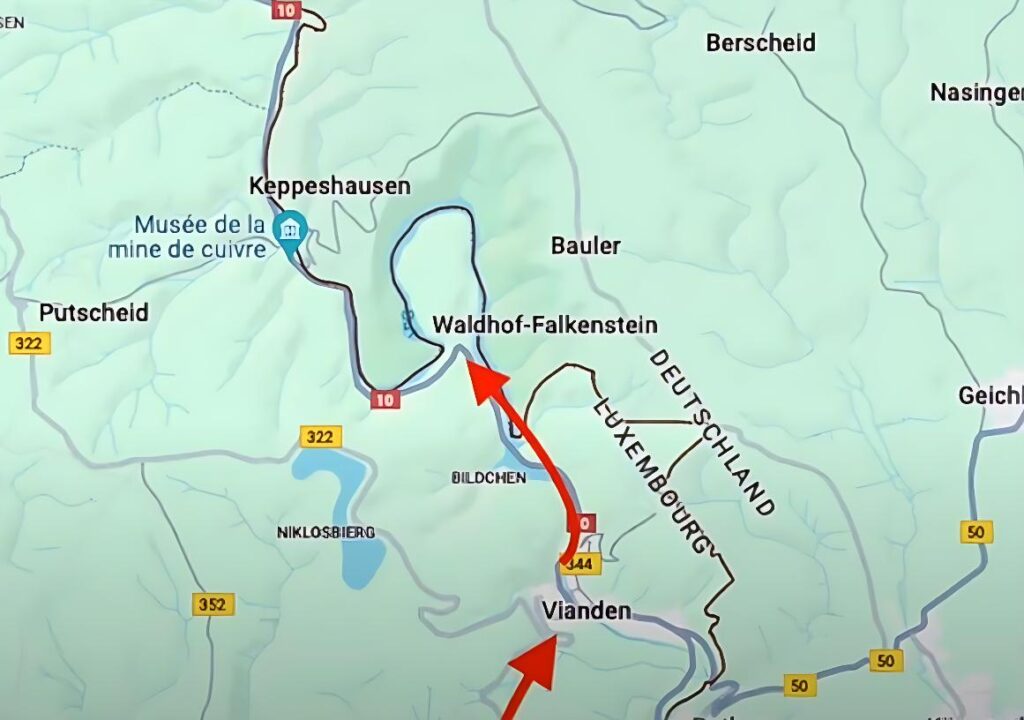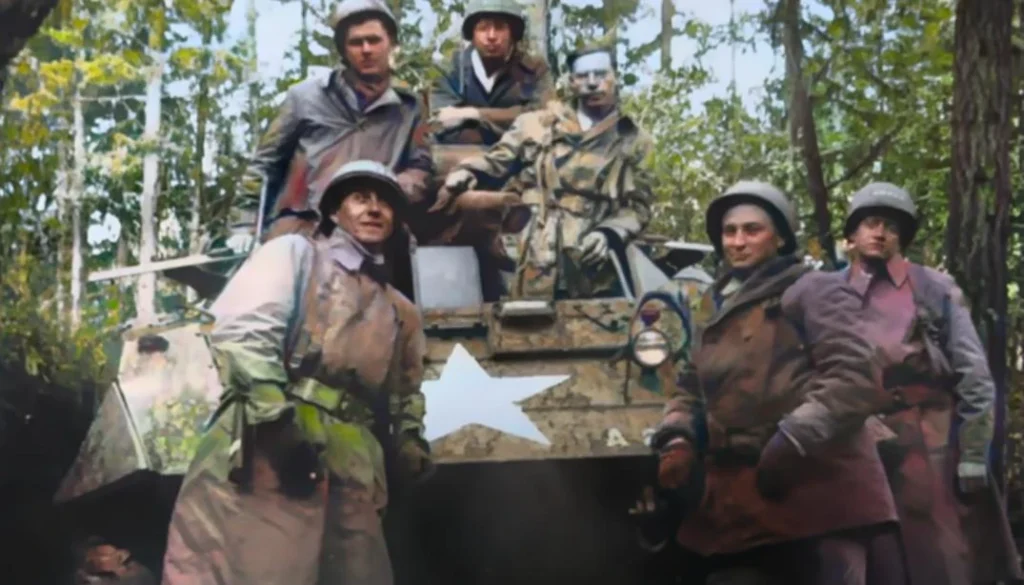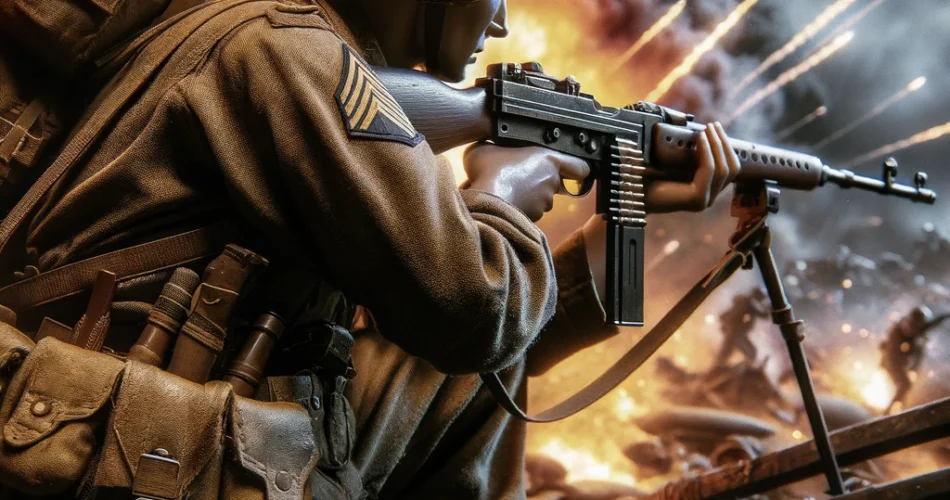On September 11, 1944, a significant yet less recognized moment in World War II history occurred when the first U.S. soldier set foot on German soil, marking a critical point in the Allied advance. This occurred 96 days after the D-Day landings, during a time when the Allies were pushing forward on multiple fronts.
Fast Track:
TL;DR
Detailed Story
Overview of the Allied Advance
- Strategic Context: By late 1944, after the successful D-Day landings, the Allied forces had made significant inroads into occupied Europe. The crossing into Germany by U.S. forces represented a direct threat to the German heartland, signaling the beginning of the end for the Nazi regime.
- Tactical Dynamics: The Western Allies, comprised of several army groups, had effectively pushed through France and Belgium. This expansion was part of a broader strategy to encircle Germany from multiple directions, applying pressure on the weakening Nazi military infrastructure.

The First Crossing into Germany
- Detailed Operation: The patrol that first crossed into Germany was part of the U.S. Third Army, known for its rapid advances under the command of General George S. Patton. This specific incursion involved detailed reconnaissance to avoid heavily fortified areas and exploit weaknesses in German defenses.
- Significance of the Crossing: This moment was symbolically significant as it represented the first time during the war that American forces had set foot in Germany, directly confronting the Nazi regime on its own soil.

Intelligence Gathering and Immediate Impact
- Gathering Crucial Data: The patrol’s ability to observe and report back on the status of the Siegfried Line provided the Allies with critical information about German defenses. This intelligence was crucial for planning further offensives into Germany.
- Implications for German Defenses: The fact that the Siegfried Line was unstaffed at several points suggested overextension and possible disarray within the German military, insights that were vital for Allied command planning.
Broader Historical Implications
- Momentum towards Victory: The crossing into Germany bolstered Allied morale and demonstrated the effectiveness of the Allied strategies of encirclement and attrition against the Axis powers.
- Preparation for Subsequent Battles: This reconnaissance mission provided a prelude to more intense and decisive engagements, such as the Battle of the Hurtgen Forest and the Battle of the Bulge, which would further test the resolve and resources of both the Allied and Axis forces.
TL;DR
- 📈 Strategic Significance: The incursion into Germany marked a crucial turning point in the Allied strategy, bringing the war directly to Nazi territory.
- 🗺️ Tactical Advancements: The patrol’s navigation of the challenging terrain and enemy defenses showcased the tactical ingenuity of the Allied forces.
- 🕵️♂️ Intelligence Contributions: The information gathered during this patrol was pivotal in planning future Allied operations that would penetrate deeper into Germany.
- 🛡️ Observing Enemy Weaknesses: The unstaffed positions along the Siegfried Line indicated vulnerabilities in the German military posture.
- 🎖️ Boosting Allied Morale: The successful crossing into Germany served as a morale booster, affirming the Allies’ superiority in both resources and strategic positioning at this stage of the war.
This expanded narrative underscores the broader strategic and tactical considerations of the Allied forces during this critical phase of World War II, highlighting the importance of reconnaissance and intelligence in military operations. The incursion into Germany not only provided vital data but also represented a psychological blow to Nazi Germany, as Allied forces demonstrated their capability and resolve to defeat the Axis powers on their own ground.
Detailed story:
September 11th to most Americans refers to of course the terrible events of 911 in 2001; however, there is another September the 11th which is very important in US history, that is September the 11th, 1944, 96 days after the D-Day Landings when the first US soldier crossed the border into Germany itself. On September 11th, 1944, the situation on the Western Front, 96 days on from the Normandy Landings, was thus: three Allied Army groups with a total of seven armies under their control were advancing in a broad Ark from Belgium to the Swiss Border. In the North, Field Marshal Bernard Montgomery’s British 21st Army group consisting of British, Canadian, and Polish divisions was pushing towards the Netherlands. The British second Army had overrun Brussels and Antwerp, the latter soon to be vital as an Allied Supply Port to support Allied operations into Germany itself.
Further south, the US first Army had captured Liège in Belgium and Luxembourg City. General George S. Patton’s US third Army had a bridgehead at Metz in the French province of Lorraine. And on September the 11th, a patrol from the third Army had linked up with French forces coming up from the south near Dijon, part of General Jacob Devers’ US 6th Army Group. Total casualties since D-Day for the Western allies up to September 11th, 1944, were almost 40,000 killed and over 20,000 missing and 165,000 wounded, so about 225,000 casualties or 10% of the three Army groups’ strength.
The Allies faced Fuel and Personnel shortages that were beginning to hamper offensive operations, but the defending Germans were in a worse state, many divisions burnt out, Shadows of their former selves, and they also had severe Fuel and tank shortages, and were drafting lots of categories of men previously kept out of combat or redirecting Luftwaffe ground Personnel into infantry units. But the Western allies were intent on breaking through the West Wall, the Siegfried line defenses into Germany proper, and here the Germans would put up tremendous resistance from well-prepared positions to try and stop them.
The fifth Corp of the US first Army was closest to the German border on September 11th, 1944. The fifth Armored Division, closing on the Our River in Luxembourg, operating in advance of the division’s combat commands were Cavalry reconnaissance squadrons of lightly armed motorized troops in Jeeps, mate armored cars and supported by light tanks. Their job was to probe the route ahead and locate enemy forces. One of these lightly armed units was the second platoon, Troop B, 85th Cavalry reconnaissance Squadron, a 29 man Recon platoon divided into two sections, an armored car section with three M8 and a scout section of three squads each with two Jeeps armed with 50 caliber machine guns and 60 mm mortars. It was a Jeep Squad that would make history on September 11th.
It was early evening when Staff Sergeant Warner H. Holzinger halted his Jeeps on the West Bank of the Our River at Vianden in Luxembourg. With him were five US soldiers and an attached French liaison officer. And if you’re thinking that Holzinger sounds like a German name, you’d be right. The first American Soldier to set foot in the Reich in World War II was a naturalized German, Warner Holzinger had been born Warner Holzinger in Rosenthal, Silesia, in 1916 and immigrated with his parents to Fort Atkinson, Wisconsin in 1921, driving a dairy truck before the war. Holzinger joined the US Army, his fluency in German getting him assigned to Cavalry reconnaissance.
A road ran North along the bank of the Our river which cut through the hilly, forested terrain. Holzinger’s orders, given to all reconnaissance units in the fifth armored division, urged caution, adding “should probing indicate great weakness in some portion of the frontier line, penetration may become possible.” The Jeeps crept North along the road until they reached the castle town of Stenberg where Holzinger’s Maps told him a bridge existed into Germany, but the bridge over the Our had been blown up by the Germans. Holzinger dismounted his men from their vehicles, and they had a look at the river which appeared shallow enough to Wade across. Armed with M1 carbines and M3 grease guns, the seven-man patrol forded the river and clambered up the far bank, weapons at the ready; they were now in Germany.
Shortly after crossing, they began to notice carefully camouflage bunkers covering the river; fortunately, they were unmanned. Moving 400 yards into Germany to a few farm buildings, a farmer came out to speak to them, and he and Holzinger conversed in German. It seemed a German rear Guard unit had withdrawn the day before. Holzinger took the farmer along as a guide, and the group marched half a mile to the crest of a ridge. Raising his field glasses, Holzinger got a first look at the dreaded Siegfried line. He counted some 20 concrete pillboxes covering Meadows and forest fire brakes, but no German soldiers were in evidence. One pillbox even had chicken coops built up against it. Noting the coordinates on his map and releasing the farmer, Holzinger and his Patrol retraced their route back to the river and crossed back into Luxembourg.
There he reported to the troop B Commander, first Lieutenant Lauren L. Vipond. Vipond’s report of having penetrated into Germany flashed up the first Army’s chain of command, and that night the word was out that US forces had crossed into Germany itself, the very Lair of the Nazi Beast. Holzinger had beaten off some stiff competition to take the prize of being first into Germany. In the early evening of September the 11th, a reinforced company of the 109th infantry, 28th Infantry Division, crossed the Our over a bridge connecting the Luxembourg Village of Weiswampach and the German Village of Roth. At about the same time near St. Vith, Belgium, a patrol from the 22nd infantry, fourth infantry division crossed the Our at the village of Emmels. This Patrol spoke to German civilians and returned with proofs of their crossing: a German Army cap, some Deutschmarks, and a packet of German soil.
Interestingly, the area where the three US patrols had crossed would be the scene of intense fighting over the coming months, the Battle of the Bulge. But for now, things appeared to be on the up, and there was hope amongst all the troops and the Western allies that they would be home by Christmas. Warner Holzinger, who received a Purple Heart during the war, died in Wisconsin in 1988 at the age of 72. And if you’re wondering, the British made their first Crossing into Germany a few days after Holzinger’s foray, a unit similar in purpose and activities to Holzinger’s outfit, a Sherwood Rangers reconnaissance section, reached the German Frontier at Baake in the Netherlands, south of Arnhem at 2 p.m. on the 20th of September, 1944. Dr. operation Market Garden where they crossed is today part of the Netherlands but during World War II was part of Germany. The first British soldier to set foot in Germany was driver Ian Cantrill, on his birthday no less.

Please allow some time for comment manual approval.